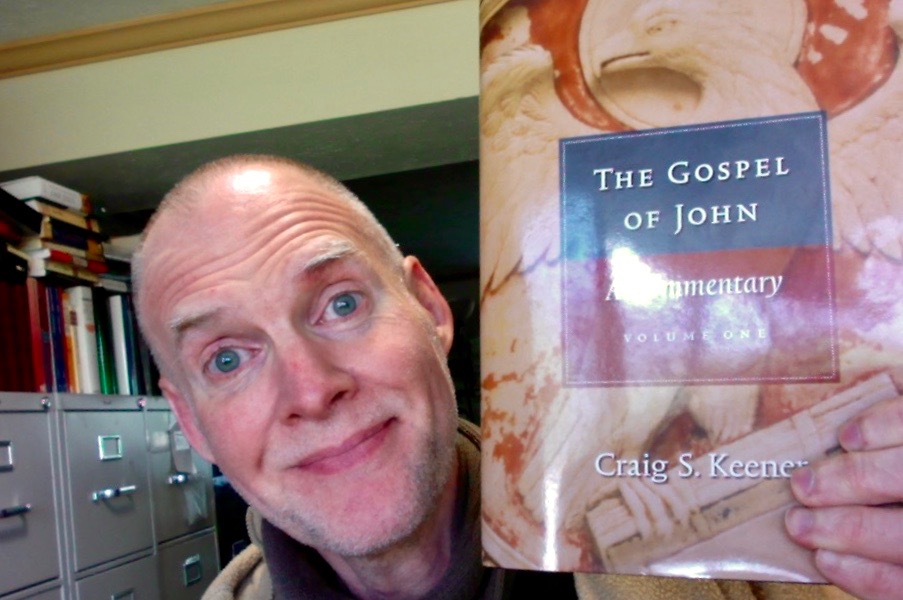In Greek, John’s Gospel includes many plays on words, and John often likes to play on the image of water. Jewish people and Samaritans used water for various ritual purposes, but John emphasizes that it is God’s Spirit, not ritual when done without the Spirit, that transforms.
Six waterpots were set aside for the ceremony of purification. Bypassing their consecrated purpose, Jesus turned the water into wine (2:6, 9). Jewish people immersed Gentile converts in water, sometimes associating this conversion process with the convert becoming like a new person. Yet Jesus insists that Nicodemus, a teacher of Israel, be born “from water and the Spirit” (3:5); the Greek construction here could also be rendered, “the water of the Spirit” (i.e., with Calvin, as a hendiadys with an epexegetical kai, for those who are interested). When the Samaritan woman meets Jesus at a well sacred to her people, she learns of living water greater than the water of Jacob’s well. She leaves behind her waterpot and becomes the first mass evangelist as she brings her people to Jesus (ch. 4).
Unable to find healing at a special healing pool for thirty-eight years, a man unable to walk is healed at once when Jesus speaks to him (5:7-9). In another case, Jesus daubs mud on a blind man’s eyes, then sends him to wash in the Pool of Siloam to be healed (9:6-7). This case shows us that the problem is not with water per se; the water of the Pool of Siloam was used for the Festival of Tabernacles, and so was being used for ritual purposes at the very time that this healing probably took place (it was the last day of the festival in 7:37, and most scholars do not believe that the earliest manuscripts include the day change in 7:53—8:2). The problem is not with ritual, but with depending on ritual when we should be depending on God himself. Because Jesus sends the man, he is healed through water from the pool this time. But both in John 5 and in John 9, it is Jesus that makes the difference.
Likewise, John the Baptist earlier contrasted his own baptism involving mere water with Jesus’s greater baptism involving the Holy Spirit (1:31, 33). John’s baptism was not bad; Jesus’s baptism, however, was greater, and the ultimate purpose to which John’s baptism pointed.
On the last day of the Festival of Tabernacles, Jesus invites the spiritually thirsty to drink from him. He announces the fulfilment of the Scripture about rivers of living water going forth from the belly (7:37-39). What Scripture did Jesus have in mind? The Scripture readings for the last day of the festival included Ezekiel 47 and Zechariah 14, which described rivers of water flowing from the temple or Jerusalem. Many Jewish people considered Jerusalem the belly or navel of the earth. This Scripture was being fulfilled that day in Jesus because Jesus is the foundation stone of God’s new temple: from him flows the water of life for the thirsty. The water of which Jesus speaks here, John tells us plainly, is the Spirit (7:39).
It is no coincidence that John is the only Gospel to make a point of narrating something that the beloved disciple witnessed at the cross. When Jesus’s side was pierced for us, not only blood but water came out (19:34). Medically, the water-like fluid may come from a broken sac around the heart, but John probably records it because it climaxes Jesus’s point: now that Jesus has been lifted up, the Spirit becomes available (7:39). John, who likes plays on words, as we have noted, also points out that when Jesus died he gave up his spirit—in words that could also be translated, “he gave the Spirit” (19:30). Once Jesus came to the disciples after the resurrection, he breathed on them (as God once breathed into Adam the breath of life) and imparted the Spirit in person (20:22).
Have we been cleansed with the spiritual water of new life? Have we drunk freely of the water of his Spirit? It is freely available; “Let the one who wills come and drink freely from the water of life” (Rev 22:17).
Craig Keener is professor of New Testament at Asbury Theological Seminary and author of a two-volume commentary on John’s Gospel published by Baker Academic.
